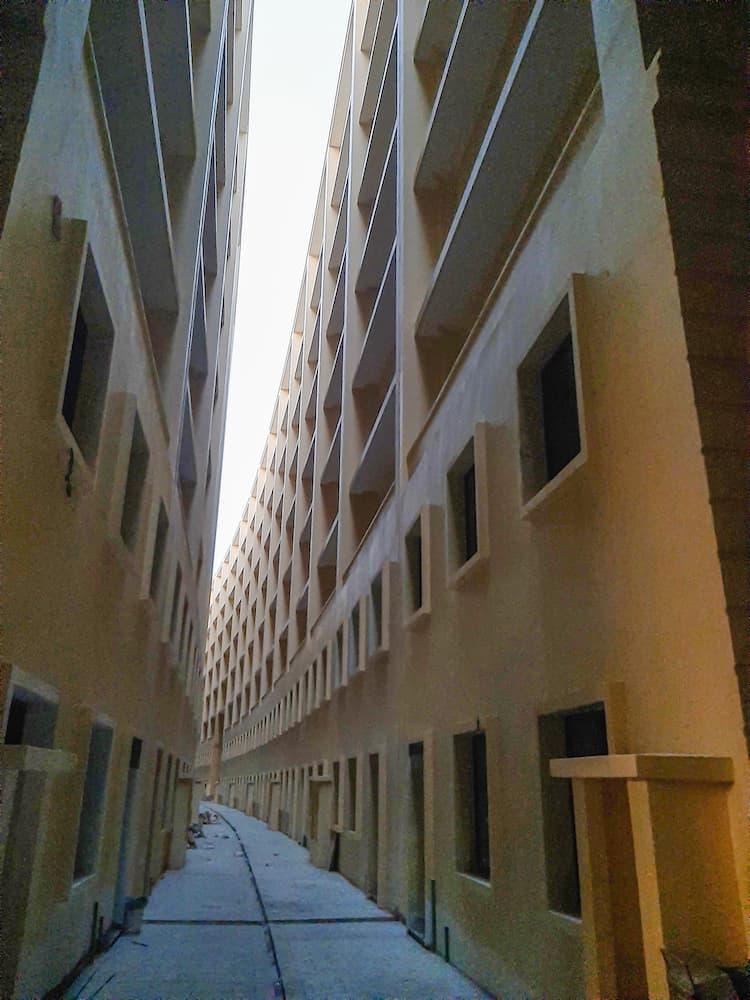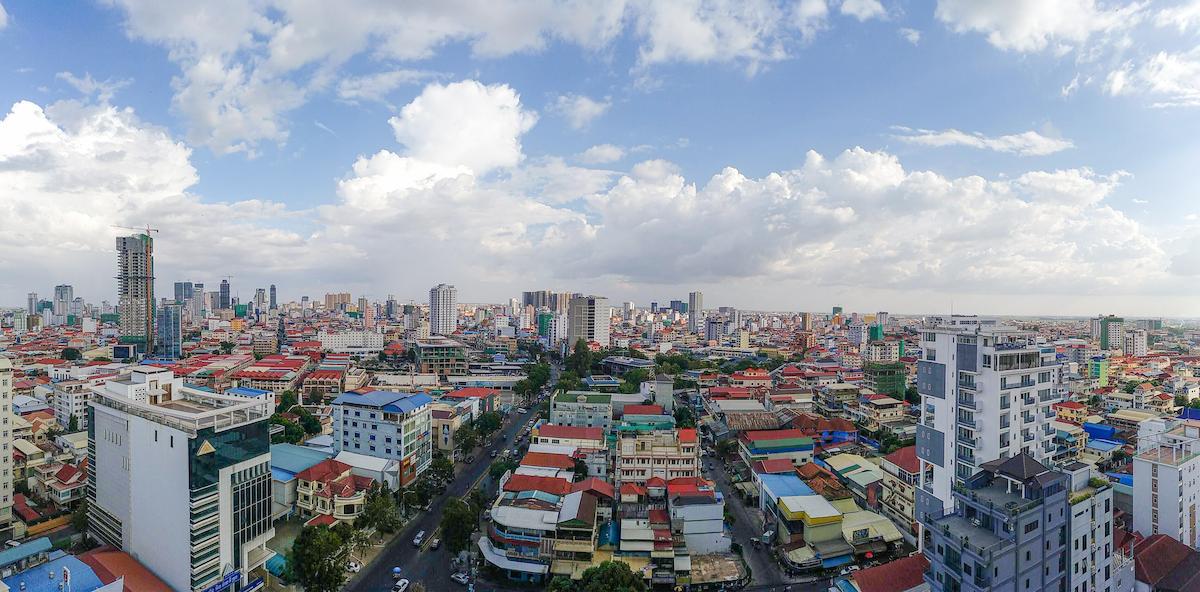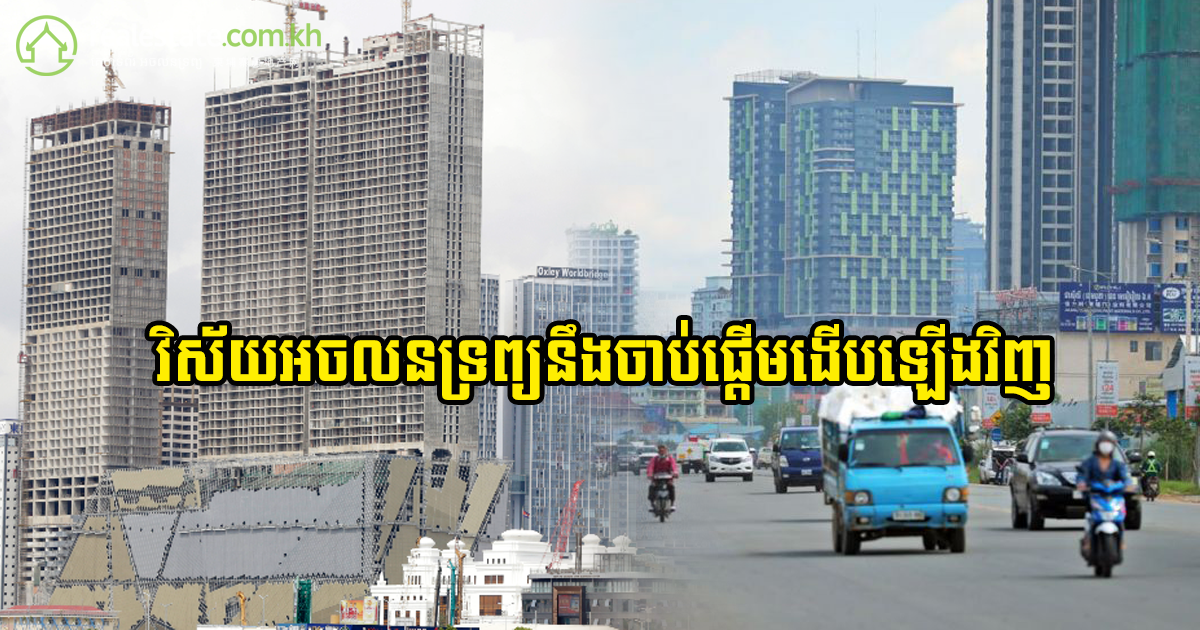Prak Norak - Junior Researcher - Future Forum
Phnom Penh and other urban areas are expanding quickly, with new projects breaking ground regularly. As cities expand, there is an increased demand for resources and with some of the current unsustainable design choices made in the early stages of the building's construction, Cambodia is potentially set up for an unsustainable future.
By maximising space over maximising airflow and natural light; pursuing trendy foreign designs over practical ones for Cambodia’s hot and humid climate; and generally insufficient knowledge on sustainable practices, there is a danger these will collectively negatively impact how well Cambodia can mitigate and adapt to its changing climate.
The current trend places an enormous burden on our environment so it is crucial that we approach new urban developments with a more Cambodia-specific and environmentally conscious mindset.
Small Design Choices Can Have Lasting Consequences
Seemingly small choices made in the early stages of the design process can translate to less sustainable and less comfortable habitats of living. These design features have lasting consequences for the quality of life, increased energy consumption and rising costs for property owners.
In many boreys across Cambodia, houses are built following the same uniform design which lack windows in key areas, necessitating the continual use of air conditioners to cool and ventilate the living space as well as additional lighting to illuminate interior spaces - even in the middle of the generally bright and sunny days we get to experience in the Kingdom.
Boreys also generally consist of houses which are too closely backed up against other dwellings, allowing only minimal light to enter the properties, not to mention that privacy is also compromised by the proximity of the neighbouring properties.
In the case of the Khmer shophouses, their arrangement only allows for front and rear placed windows to allow light and air to flow inside the property. This familiar layout of a traditional shophouse in Cambodia may maximise the use of space but it arguably compromises the quality of life within these popular developments. Is the benefit of the extra space worth the lack of proper ventilation and lighting?
Even the United Nations Environment Programme (UNEP) is trying to address this, through the Asia Pacific Clean Air Partnership and the Climate and Clean Air Coalition, which has partnered with the Cambodian Ministry of Environment to develop the country’s first Clean Air Plan.

Don't Mimic Buildings That Aren’t Built For The Cambodian Climate
Looking out across the Phnom Penh skyline, buildings wrapped in green cloth are symbolic of those currently under construction. These buildings, for the most part, are enclosed in glass, metal, and concrete.
This trend of applying ill-suited architecture is an unsustainable way of designing buildings in Cambodia. This isn’t just socially unsustainable - stripping Cambodia of its design identity - but this practice threatens Cambodia’s liveability in the face of dramatic and real climate change.
Buildings wrapped in glass exteriors allow for natural light and expansive views of the cityscape but this also traps heat in the building by overexposing the interior to sunlight which again necessitates the use of costly air conditioners. Not only is this an inefficient choice, it is a damaging and costly way for the building to operate and also exacerbates energy shortages and electrical blackouts.
Cambodia isn’t the only country facing the issue of overusing foreign development designs.
India struggles through record-breaking heat, but architects and designers there are coming to grips with the consequences of poorly adapted buildings to the local climate.
Architects and environmentalists are calling for a return to “vernacular,” traditional and locally-oriented designs that are better suited to India’s scorching heat and which require less energy to keep cool in the long term.
For India, this means building out of the earth, rather than building out of concrete, glass, and metals, and the buildings’ orientation is designed to minimise sun exposure and make ample use of overhanging roofs and walls to shade buildings from heat. Climate-aware designers make use of traditional features like central courtyards for ventilation.
Cambodian designers and developers must aim to employ techniques best suited to our particular climate and some already are.
It’s important to note that “modernisation” doesn’t mean copying others. Local designers, or those operating from overseas in Cambodia, can create a contemporary and updated version for Cambodia. These examples below are embracing sustainable and localised designs:
- Urban Village - focuses on community lifestyles with high-quality architectural designs inspired by Cambodian traditional life.
- Angkor Grace Residence & Wellness Resort - located in Siem Reap, this development is a green-centred project utilising greenspace and solid wood panels that pay homage to Cambodia’s rich architectural heritage.
- Bakong Village - aims to revive the sense of community while living in the ‘village’. Combined with a walkable neighbourhood, this creates a breath of fresh air from the design trend that parodies foreign architecture designs.
- The Coconut Park and Trillion Park on Koh Pich - offer much-needed greenspace in the bustling capital of Phnom Penh.
- Kambujaya properties - offer residential shophouses that break the norm and has a courtyard in the centre which is open air & allows natural light and air to enter the inner part of the property.
These shifts might necessitate a return to traditional Khmer elements of design. Designers can use alternative materials for construction and revive the concept of open spaces at the ground level to promote socialising as seen in many stilted houses in rural areas in the Kingdom.
For Cambodia to make significant shifts in design philosophy, perhaps it is best to start with young designers. With Cambodia’s urban population set to increase to 7.92 million by 2030, which will account for 44 per cent of the total population (up from 6.13 million in 2019), action needs to be taken.
Create more educational opportunities for sustainable buildings
It is paramount that Cambodian students build with the future in mind. This is why imbuing students with applicable knowledge of sustainability is important.
Currently, Cambodian design schools lack dedicated and specialised sustainability classes and there are few Cambodia-specific educational resources on the subject. Without Cambodia-specific educational tools, young architects and designers struggle to learn what design techniques, building materials, and building strategies can be employed for Cambodia’s specific climate.
Furthermore, transdisciplinary workshops in which people from different fields of study can trade ideas may create even more opportunities.
Small steps have already been taken. The "Sustainable Building Arena'' (SBA) organised by the Build4People project team, brings together innovative people from various backgrounds to collectively and transdisciplinary develop sustainability visions and solutions for Cambodia. Participatory and collaborative workshops like the SBA can help expose students to a sustainability mindset early on.
A Summary - Designing for a Sustainable Future
Currently, only some developers are designing sustainable projects but they should be encouraged to increase their output for a sustainable future.
As for students, sustainable design classes are crucial to advancing their knowledge which can be enhanced by an open-source depository of information related to sustainable practices.
Transforming our buildings and our cities into more sustainable and liveable spaces won’t be easy, but any step which moves us away from climate-ignorant design toward climate awareness can (and should be made) set Cambodia up to mitigate and adapt to a changing climate.
Photos by Ravi Jayaweera




Comments